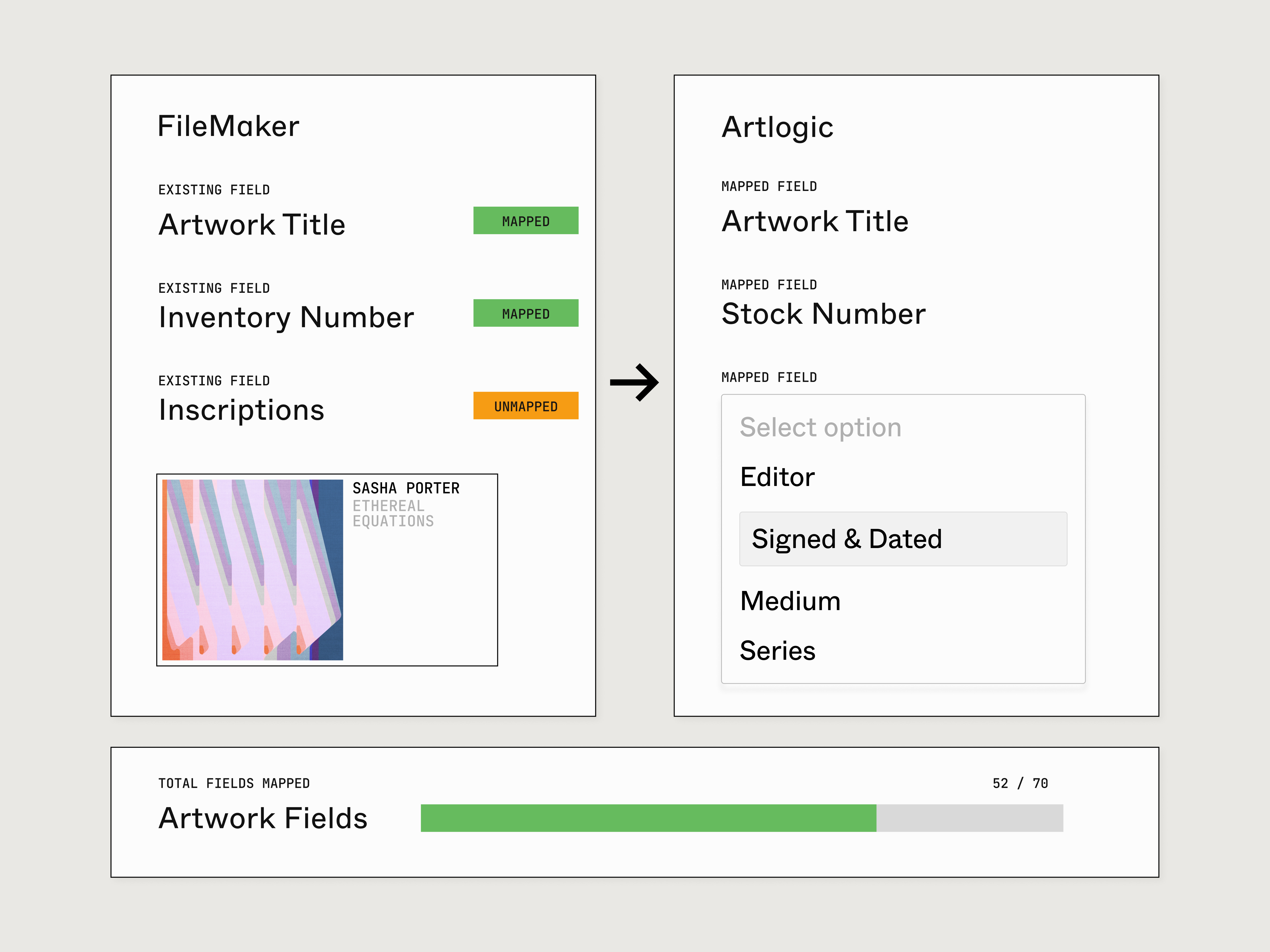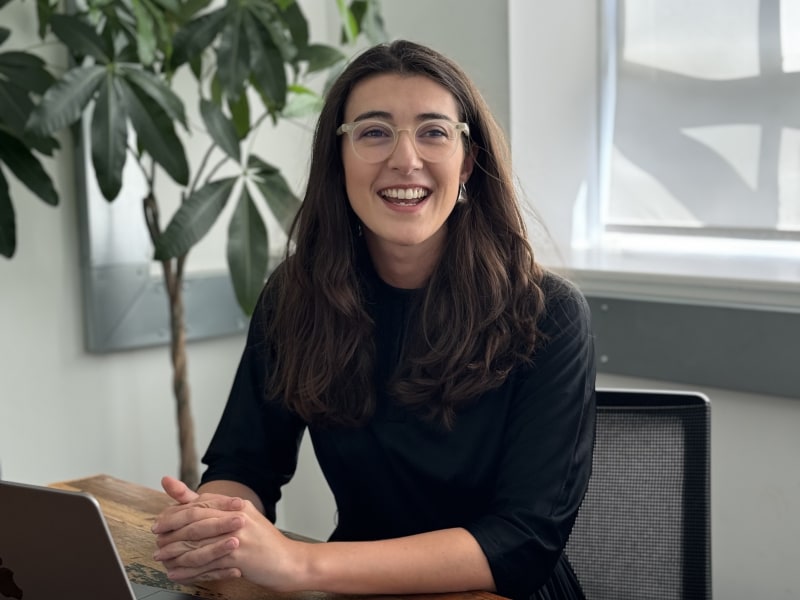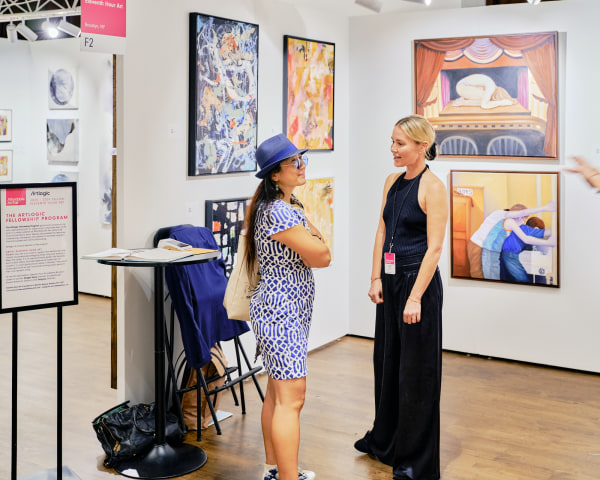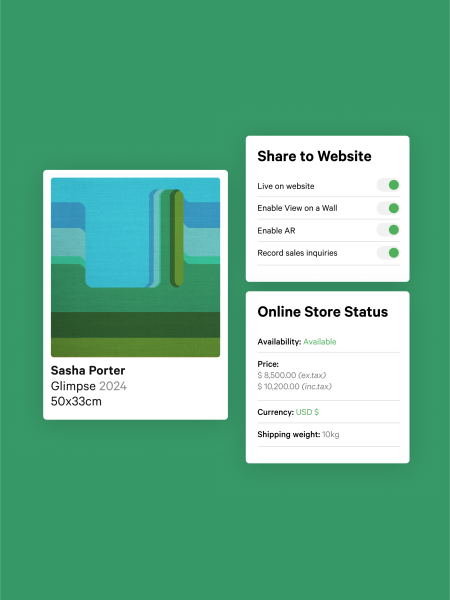For many galleries, the prospect of moving to a new system can feel daunting. The idea of migrating thousands of pieces of inventory, integrating various business processes, and learning a new platform can overwhelm even the most seasoned professionals. However, for over 800 galleries since 2020, Artlogic’s onboarding service has provided a solution that makes the transition smoother, faster, and more efficient.
To understand more about this process, we sat down with Tilly, the Head of Client Onboarding at Artlogic. With her extensive background in the art world and leadership of a talented team of onboarding specialists, Tilly has a unique perspective on the challenges and rewards of helping galleries onboard to Artlogic.
Meet Tilly: Head of Client Onboarding at Artlogic
Tilly brings a wealth of experience from across the art sector. Before joining Artlogic, she worked at leading institutions such as Galerie Max Hetzler, Christie’s auction house, Phaidon, and an art advisory firm. With a Master’s degree from the University of the Arts London (UAL), she has a deep understanding of how art organizations operate, what they need to run efficiently, and how technology can play a crucial role in their growth.
In her role as Head of Client Onboarding, Tilly manages a team of specialists and developers across both the UK and the US, all of whom are dedicated to ensuring that new clients can make the most of the Artlogic platform. Her team is responsible for not just the migration of data but also providing personalized training to clients, ensuring that they are set up for success right from the start.
“I love leading the Onboarding team,” Tilly says. “It’s incredibly rewarding to know that when clients log in for the first time, their data is right where it needs to be, and they’re ready to dive straight into their next exhibition or fair.”
The Expertise Behind the Onboarding Team
What makes Artlogic’s onboarding process so effective? Simply put, it’s all down to the expertise and wealth of knowledge of the team. All onboarding specialists at Artlogic come from art world backgrounds, with many having worked directly within galleries. This means that they are intimately familiar with the daily workings of art businesses and the specific workflows that galleries require to thrive.
“The beauty of our team is that they’ve seen every way our clients use the platform,” Tilly explains. “They can offer tailored advice and solutions that fit a gallery’s or artist studio’s needs, whether it’s managing a small collection or migrating from an entire custom-built database.”
Alongside a team of database specialists, Artlogic has a dedicated group of Migration Engineers who focus solely on helping clients transfer their data. These developers are experts in mapping data from a client’s old system to the Artlogic platform, ensuring that the transition is seamless.
“We’ve helped many hundreds of galleries make the switch, and each project presents a new challenge,” Tilly notes. “But with the support of our team, we can make sure that the migration process is smooth and that the client’s business doesn’t skip a beat.

Tailored Onboarding Pathways for Every Gallery
Every gallery is different, which is why Artlogic has developed a range of onboarding pathways to cater to the diverse needs of its clients. Whether a gallery is upgrading from a previous system or starting fresh with a new database, Artlogic has a tailored approach to make sure the migration process is as smooth and efficient as possible.
“We’ve worked with clients from over 40 different inventory and CRM systems, and we’ve seen every type of data setup imaginable,” Tilly explains. “Our Custom Path allows us to adapt the platform to each client’s unique needs, ensuring a perfect fit.”
A Comprehensive Approach to Client Success
The onboarding process at Artlogic isn’t just about migrating data—it’s about setting clients up for long-term success. Each client is paired with a dedicated onboarding specialist who offers one-on-one consultations and training sessions. These training sessions ensure that clients fully understand how to use the Artlogic platform to its fullest potential.
“We want our clients to feel confident with every aspect of Artlogic,” Tilly says. “During the training, we go beyond just teaching the basics—we dive into how to use specific features that will best suit their workflows. Whether it’s a registrar, a sales team member, or a marketing professional, we ensure that everyone in the organization is equipped with the tools they need.”
For example, Tilly’s team recently worked with Marc Quinn Studio, which had been using a custom-built database. Artlogic’s team designed a custom import script to handle the unique fields and data structure of the studio’s inventory. After thorough consultations, the team was able to build a system that was perfectly tailored to the studio’s complex needs
A New Chapter in the Gallery’s Growth
The benefits of Artlogic’s onboarding process extend far beyond the initial setup. Once a gallery or studio has been fully onboarded, clients find that their day-to-day operations become more streamlined and efficient. With Artlogic, galleries can expect to spend less time on manual administrative tasks and more time focusing on what truly matters: the art.
“By the end of the onboarding process, the client has a thorough understanding of how the platform works and exactly where to find their data,” Tilly explains. “They’re not just familiar with the basics—they can dive deep into the platform and use it to its full potential.”
“As the art world continues to evolve, it’s crucial for galleries to have a system that supports their growth,” Tilly concludes. “At Artlogic, we’re committed to making sure that every client has the right tools and support to succeed in the digital age.”
Onboarding with Artlogic marks a new chapter in a gallery’s development. For galleries considering making the switch, Artlogic’s onboarding service provides the guidance and expertise needed to navigate the complexities of data migration, ensuring that every client is ready for success as they embrace the future of the art world.
Learn more






